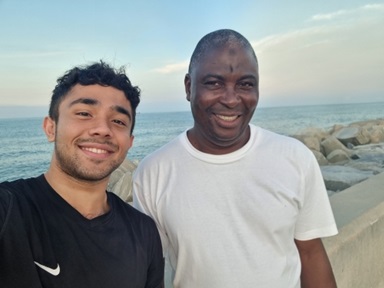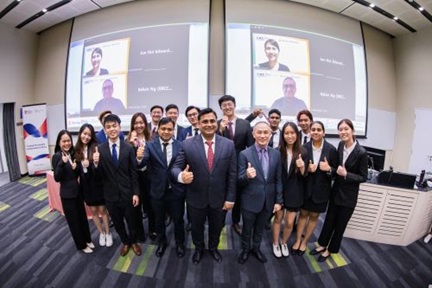Made in Rwanda
A small landlocked republic taps its rich art, culture, and traditional produce to build a stronger national identity and economy
In Rwandan bookshops, children’s books written by local writers line the shelves. Music performances in the native tongue, Kinyarwanda, are held regularly across the city and handwoven baskets in colourful patterns are a favourite of tourists and locals alike. Rwanda places a strong emphasis on creating its own goods and supporting local arts.
 Jeanne Mukankuranga, 48, weaves a basket at Talking Through Art, an organisation that aims to empower women with disabilities by teaching them how to make crafts to earn a living for themselves. PHOTO: EUNICE SNG
Jeanne Mukankuranga, 48, weaves a basket at Talking Through Art, an organisation that aims to empower women with disabilities by teaching them how to make crafts to earn a living for themselves. PHOTO: EUNICE SNG
In 2017, the Government of Rwanda implemented a policy called Made in Rwanda which aims to promote local manufacturing, culture, and artistic works. “It’s all about self-reliance, which is a value that is really cultivated in this country. That has a huge impact on national identity and pride,” said Tony Nsanganira, 43, strategic advisor at Tony Blair Institute for Global Change in Rwanda.
This is the spirit that drives Imagine We Rwanda (IWR), a local book publisher. “We want to be able to read and write our own stories,” said Ange Iliza, 24, IWR’s communications manager. “American authors would come here and write stories from their perspective. That is one of the things we want to change.”
Since its launch in 2015, IWR has published 23 books and jigsaw puzzles. Most are children’s titles, including the country’s first fairy tale written in Kinyarwanda. Iliza said when growing up, she did not recall reading any illustrated books with characters she could relate to.
“Now, it is different. When many children get our books, they are reading Kinyarwandan stories for the first time. “At first, they wonder what’s happening. But the more they read, the more they see familiar faces and names. And then their faces light up.” Most IWR illustrations are done by Reuben Niyinkuru, 21. The visual artist spends his time drawing African children and animals using the “Procreate” application on his iPad. It takes him 10 to 15 days to complete the drawings. Commenting on his work, Iliza said her favourite project was a book about outstanding Rwandan women. “In the book, Reuben illustrated mythical characters from Rwandan folktales who have never been visualised before. He had the liberty to be imaginative and put a face to the story, which came out really accurate.”
 Visual artist Niyinkuru Reuben, 21, creates illustrations for Imagine We Rwanda’s titles on his iPad. It takes him about two weeks to finish drawings for a book. PHOTO: EUNICE SNG
Visual artist Niyinkuru Reuben, 21, creates illustrations for Imagine We Rwanda’s titles on his iPad. It takes him about two weeks to finish drawings for a book. PHOTO: EUNICE SNG
While youthful, lighthearted titles form the bulk of sales, non-fiction books such as Transmitting Memories in Rwanda are also popular. Written by genocide survivor Claver Irakoze, the book describes the tragedy from a local perspective. “Rwandans are the ones who went through these horrible times,” said Iliza. “They have the responsibility to find a way to transfer these memories in a better way. Having a Rwandan write that book is very significant.”
Beyond publishing, a new generation of local musicians is releasing modern tracks with a distinctly Rwandan flair. Kinyatrap — short for Kinyarwandan trap music — has surged in popularity since 2018. The trap genre of music consists of rap and rhythmic sounds accompanied by synthesisers. An up-and-coming Kinyatrap artist is Kenny Rulisa, 24, more commonly known as Kenny “K-Shot”, who has recorded three albums.
 Musician Kenny K-Shot, 24, performs his songs Umutima and Ibitambo during half-time at a match between the Rwandan and Nigerian teams during the FIBA Women’s AfroBasket 2023 Championship on Aug 4. PHOTO: SHARLYNE SOH
Musician Kenny K-Shot, 24, performs his songs Umutima and Ibitambo during half-time at a match between the Rwandan and Nigerian teams during the FIBA Women’s AfroBasket 2023 Championship on Aug 4. PHOTO: SHARLYNE SOH
“The music industry is very young. We were not making new music before the 2000s. Back then, it was still just the traditional music. “This is brand new, and when we sing our songs, we are very open and harsh,” he said. A big part of this unique genre involves experimentation. “I like to sample old Rwandan songs,” said Rulisa. “Sometimes we would bring someone who sings traditional songs and has all the instruments. Then we record it and make a beat out of it.” To appeal to international audiences, he sometimes mixes English with Kinyarwanda in his lyrics. “I want to put Rwanda on the map and take our music to the next level. That is our way of showing love to Rwanda, you know, trying to take our name as far as possible.”
This sentiment resonates with local artisans who showcase the rich tapestry of Rwandan culture through traditional craft. Across the country, women weave baskets and sew fabric accessories at shops. Baskets, traditionally a symbol of peace and plentiful harvest, are used to hold food items on kitchen counters or displayed as decorative pieces.
 Artisan Umutoni Hasha, 34, embroiders patterns for pouches to be sold at the Nyamirambo Women’s Centre. She has been working there for six years. PHOTO: EUNICE SNG
Artisan Umutoni Hasha, 34, embroiders patterns for pouches to be sold at the Nyamirambo Women’s Centre. She has been working there for six years. PHOTO: EUNICE SNG

Coffee and tea accounted for 10% of total national exports in 2021.[1] Tea, widely considered the national drink, grows at high altitudes in temperate climates with fertile volcanic soil. This contributes to the beverage’s superior quality. From a young age, Rwandans drink black tea with plenty of milk and sugar.
Although Rwandan coffee is less popular domestically, the product is recognised as one of the finest in the world. Exports by Nyamurinda Coffee Growers Ltd, a local coffee producing firm, prove this. “60% of our products go to Europe, while another 25 per cent goes to Canada, Taiwan, and Singapore,” said Immaculee Mukarama, 54, co-founder and managing director of Nyamurinda Coffee Growers.
 Locally grown and roasted coffee from the Gakenke district. PHOTO: RYAN CHIONG
Locally grown and roasted coffee from the Gakenke district. PHOTO: RYAN CHIONG
From children’s books to songs in Kinyarwanda, the country is building its national identity. Traditional agricultural products such as coffee and tea have already made their mark. It now remains for the world to recognise Made in Rwanda.
Eunice Sng is a final year journalism student in Nanyang Technological University’s Wee Kim Wee School of Communication and Information. Her report on Made in Rwanda was part of the school’s Going Overseas for Advanced Reporting programme.
[1] Source: Observatory of Economic Complexity








